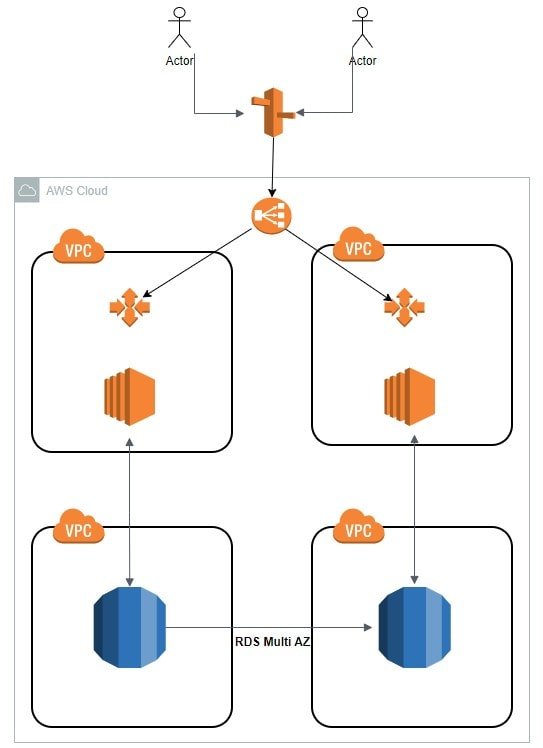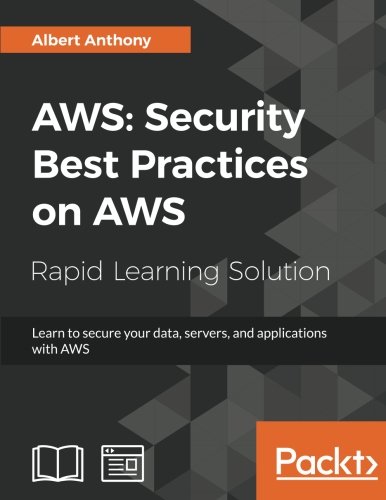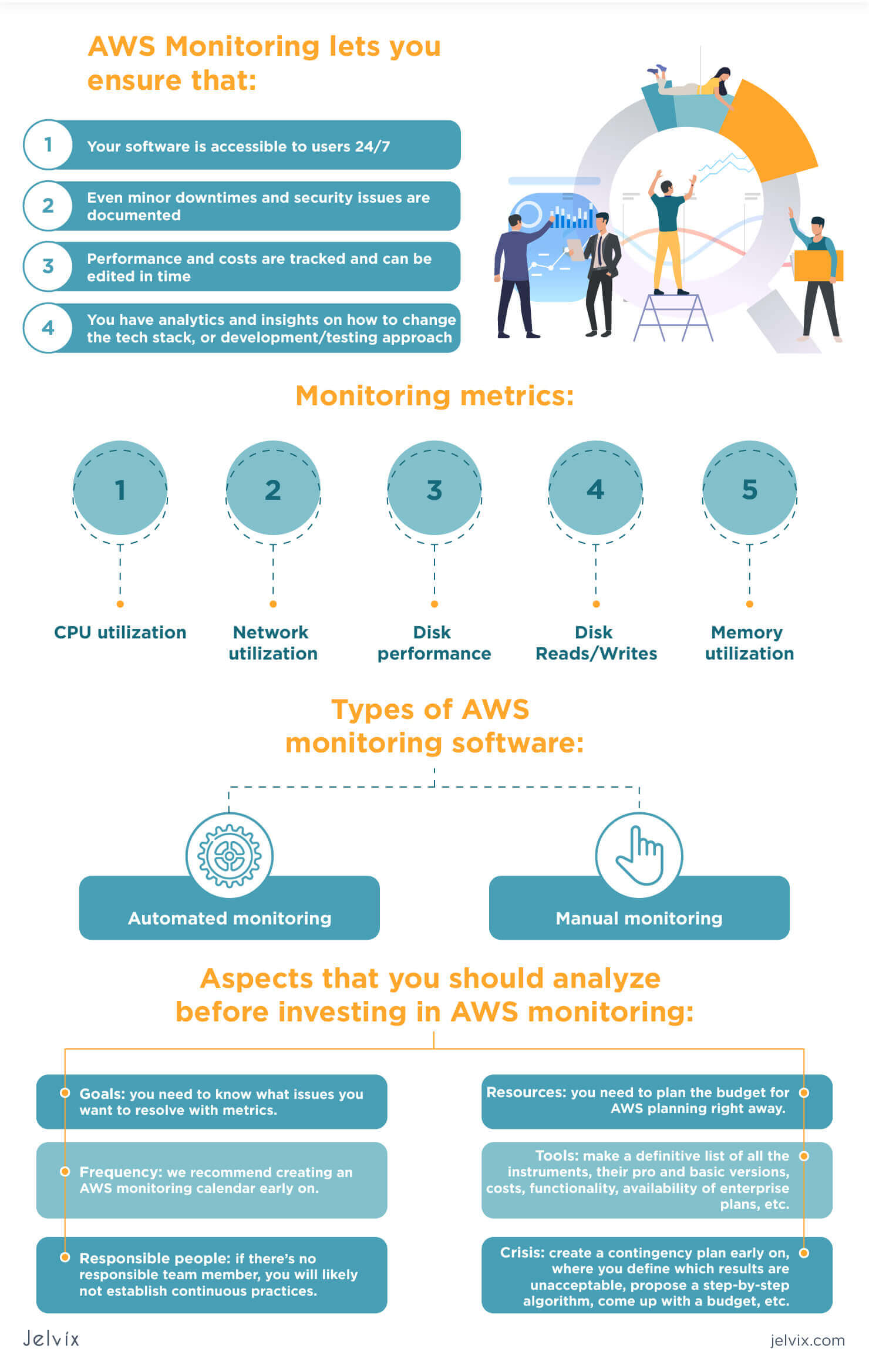Navigating the AWS Ecosystem: Key Responsibilities of a Solutions Architect
As the cloud computing landscape continues to evolve, the role of the AWS Solutions Architect has become increasingly crucial. These professionals are responsible for designing and deploying scalable, highly available, and fault-tolerant systems on the AWS platform. They serve as the bridge between business requirements and technical implementation, ensuring that AWS-based solutions meet the organization’s needs while adhering to best practices and industry standards. The primary responsibilities of an AWS Solutions Architect include:
Assessing business requirements and translating them into technical solutions: The Solutions Architect must have a deep understanding of the client’s or organization’s objectives, challenges, and constraints. They then leverage their expertise in AWS services and architectures to design and implement cloud-based solutions that address these requirements effectively.
Designing and deploying scalable and resilient systems: A key aspect of the Solutions Architect’s role is to ensure that the AWS infrastructure can handle fluctuations in traffic and workloads. This involves designing and implementing highly available and fault-tolerant architectures, leveraging features like multi-Availability Zone (AZ) deployments, load balancing, and automated failover mechanisms.
Optimizing for cost and performance: The Solutions Architect must strike a balance between cost-effectiveness and high performance when designing AWS solutions. They need to be well-versed in AWS pricing models, instance types, and services to recommend the most suitable and cost-efficient options for the client’s needs.
Ensuring security and compliance: Securing the AWS environment is a critical responsibility for the Solutions Architect. They must be familiar with AWS security services, identity and access management, data encryption, and compliance requirements to safeguard the client’s cloud infrastructure and data.
Automating and scaling AWS solutions: The Solutions Architect should leverage the power of infrastructure as code and automation to streamline the deployment and scaling of AWS-based applications. Tools like AWS CloudFormation, AWS Lambda, and Auto Scaling can help the Solutions Architect create efficient and scalable solutions.
Monitoring and troubleshooting AWS environments: Effective monitoring and troubleshooting are essential for maintaining the health and performance of AWS-based applications. The Solutions Architect must be proficient in using AWS CloudWatch, AWS CloudTrail, and other monitoring tools to proactively identify and address issues.
By mastering these key responsibilities, the AWS Solutions Architect plays a pivotal role in helping organizations harness the full potential of the AWS cloud and achieve their business objectives.
Building a Solid Foundation: Understanding AWS Core Services and Concepts
To effectively fulfill the role of an AWS Solutions Architect, it is essential to have a comprehensive understanding of the core AWS services and concepts. These foundational elements form the building blocks for designing and deploying robust cloud-based solutions. At the heart of the AWS ecosystem lies the Elastic Compute Cloud (EC2), which provides scalable and flexible virtual computing resources. The Solutions Architect must be well-versed in EC2 instance types, Auto Scaling, and load balancing to ensure that the infrastructure can handle fluctuations in workload and traffic.
Another crucial service is the Simple Storage Service (S3), which offers highly durable and scalable object storage. The Solutions Architect should be familiar with S3 storage classes, versioning, and cross-region replication to ensure the availability and durability of data.
The Virtual Private Cloud (VPC) is a critical component that allows the Solutions Architect to create and manage a logically isolated section of the AWS cloud. Understanding VPC concepts, such as subnets, routing tables, and security groups, is essential for designing secure and efficient network architectures.
Identity and Access Management (IAM) is a fundamental service that enables the Solutions Architect to control access to AWS resources. Mastering IAM policies, roles, and user management is crucial for implementing robust security measures and adhering to the principle of least privilege.
In addition to these core services, the Solutions Architect should also be familiar with other essential AWS offerings, such as:
Relational Database Service (RDS) for managed database solutions
Lambda for serverless computing
CloudWatch for monitoring and logging
CloudTrail for tracking API calls and user activity
CloudFormation for infrastructure as code
By understanding how these AWS services and concepts work together, the Solutions Architect can design and deploy cloud-based solutions that are scalable, secure, and optimized for performance and cost-effectiveness.
Continuous learning and staying up-to-date with the latest AWS offerings and best practices are crucial for the Solutions Architect to maintain their expertise and provide the most value to their clients or organizations.
Designing for High Availability and Fault Tolerance
As an AWS Solutions Architect, one of the primary responsibilities is to design and deploy highly available and fault-tolerant systems. In the cloud computing landscape, where reliability and uptime are critical, the Solutions Architect must understand the principles of high availability and fault tolerance and how to implement them effectively on the AWS platform. High availability refers to the ability of a system to remain operational and accessible even in the face of hardware or software failures. In the context of AWS, this can be achieved through various strategies, such as:
Multi-Availability Zone (AZ) deployments: By distributing resources across multiple Availability Zones within a single AWS Region, the Solutions Architect can ensure that the system can withstand the failure of a single AZ without disrupting overall availability.
Load balancing: Implementing load balancing mechanisms, such as Elastic Load Balancing, allows the Solutions Architect to distribute incoming traffic across multiple EC2 instances, ensuring that the system can handle increased workloads and maintain high performance.
Automated failover: The Solutions Architect can leverage AWS services like Route 53 and Auto Scaling to automate the process of detecting and responding to failures, ensuring that the system can seamlessly recover and maintain availability.
Fault tolerance, on the other hand, refers to the ability of a system to continue operating even in the presence of component failures. In the AWS context, the Solutions Architect can design fault-tolerant architectures by:
Implementing redundancy: Ensuring that critical components, such as databases, message queues, and storage, have redundant instances or backups to mitigate the impact of individual failures.
Leveraging managed services: Utilizing AWS managed services, such as RDS, Kinesis, and DynamoDB, can offload the responsibility of managing the underlying infrastructure, allowing the Solutions Architect to focus on building resilient applications.
Incorporating circuit breakers and retries: Implementing circuit breakers and retry mechanisms can help the system gracefully handle failures and prevent cascading issues, ensuring that the overall application remains functional.
By mastering the principles of high availability and fault tolerance, the AWS Solutions Architect can design and deploy cloud-based solutions that are resilient, scalable, and capable of withstanding various types of failures, ensuring that the client’s or organization’s critical workloads remain operational and accessible.
Optimizing for Cost and Performance
As an AWS Solutions Architect, it is crucial to strike a balance between cost optimization and performance optimization when designing cloud-based solutions. The ability to leverage AWS pricing models, instance types, and services effectively can significantly impact the overall cost-effectiveness and efficiency of the deployed infrastructure. Cost optimization is a key consideration for many organizations, as they seek to maximize the return on their cloud investments. The Solutions Architect must be well-versed in the various pricing models offered by AWS, such as On-Demand, Reserved Instances, and Spot Instances, to recommend the most suitable and cost-effective options for the client’s or organization’s needs.
Additionally, the Solutions Architect should explore the use of AWS services that can help optimize costs, such as:
AWS Savings Plans: These commitment-based pricing models can provide significant cost savings for EC2 and Fargate usage, allowing the Solutions Architect to plan and budget more effectively.
AWS Lambda and Serverless: Leveraging serverless computing services like AWS Lambda can help reduce the need for managing and scaling infrastructure, leading to potential cost savings.
AWS Trusted Advisor: This service provides recommendations and insights to help the Solutions Architect identify opportunities for cost optimization, such as underutilized resources or unused services.
While cost optimization is essential, the Solutions Architect must also ensure that the designed solutions deliver the required performance and scalability. This involves selecting the appropriate EC2 instance types, provisioning the right amount of compute and memory resources, and leveraging services like Amazon RDS, Amazon ECS, and Amazon EKS to meet the application’s performance requirements.
The Solutions Architect should also consider the use of caching mechanisms, content delivery networks (CDNs), and other performance-enhancing services to optimize the user experience and reduce latency.
By carefully balancing cost optimization and performance optimization, the AWS Solutions Architect can design cloud-based solutions that are both cost-effective and highly performant, meeting the client’s or organization’s business objectives while maximizing the value of their AWS investment.
Securing Your AWS Environment: Best Practices and Strategies
As an AWS Solutions Architect, ensuring the security of the cloud infrastructure is a critical responsibility. The Solutions Architect must be well-versed in AWS security services, identity and access management, data encryption, and compliance considerations to protect the client’s or organization’s cloud-based assets. One of the foundational elements of AWS security is Identity and Access Management (IAM). The Solutions Architect must understand how to effectively manage user identities, roles, and permissions to implement the principle of least privilege and control access to AWS resources. This includes configuring IAM policies, managing user groups, and leveraging features like multi-factor authentication (MFA) to enhance the overall security posture.
In addition to IAM, the Solutions Architect should also be familiar with other AWS security services, such as:
AWS Shield: This managed service provides protection against Distributed Denial of Service (DDoS) attacks, ensuring the availability and resilience of the AWS-based applications.
AWS WAF (Web Application Firewall): This service allows the Solutions Architect to create custom rules to monitor and filter incoming web traffic, protecting against common web-based attacks.
AWS Macie: This service uses machine learning to automatically discover, classify, and protect sensitive data stored in Amazon S3, helping to ensure data security and compliance.
AWS GuardDuty: This intelligent threat detection service continuously monitors for malicious activity and unauthorized behavior within the AWS environment.
Data encryption is another crucial aspect of security that the Solutions Architect must address. This includes understanding how to leverage AWS Key Management Service (KMS) to create and manage encryption keys, as well as how to implement server-side and client-side encryption for data at rest and in transit.
Furthermore, the Solutions Architect must be aware of various compliance frameworks, such as PCI-DSS, HIPAA, and GDPR, and ensure that the designed AWS solutions adhere to the necessary security and regulatory requirements. This may involve the use of services like AWS Config and AWS Artifact to monitor and demonstrate compliance.
By prioritizing security and implementing best practices, the AWS Solutions Architect can help organizations protect their cloud-based assets, mitigate risks, and maintain the trust of their customers or stakeholders.
Automating and Scaling Your AWS Solutions
As an AWS Solutions Architect, the ability to automate and scale cloud-based solutions is a crucial skill. By leveraging the power of infrastructure as code and various AWS services, the Solutions Architect can streamline the deployment, management, and scaling of AWS-based applications, ensuring that they can adapt to changing business requirements and workloads. One of the key concepts in the AWS ecosystem is infrastructure as code, which allows the Solutions Architect to define and manage the entire AWS infrastructure through code. This approach, enabled by services like AWS CloudFormation, provides several benefits:
Consistency and repeatability: By defining the infrastructure in code, the Solutions Architect can ensure that the deployment process is consistent and repeatable, reducing the risk of manual errors.
Versioning and collaboration: Infrastructure as code allows the Solutions Architect to version control the AWS resources, enabling collaboration and facilitating the review and approval of changes.
Scalability and agility: The Solutions Architect can leverage CloudFormation templates to quickly provision and scale AWS resources as needed, responding to fluctuations in demand or business requirements.
In addition to CloudFormation, the Solutions Architect should also be familiar with other AWS services that can help automate and scale cloud-based solutions, such as:
AWS Lambda: This serverless computing service allows the Solutions Architect to run code without the need to manage underlying infrastructure, enabling event-driven and scalable architectures.
AWS Auto Scaling: This service automatically adjusts the compute capacity of the AWS resources, ensuring that the applications can handle changes in traffic or workload without manual intervention.
AWS Elastic Beanstalk: This platform service simplifies the deployment and management of web applications, automatically handling the provisioning and scaling of the underlying infrastructure.
AWS ECS and EKS: These container orchestration services enable the Solutions Architect to deploy and manage containerized applications at scale, leveraging the benefits of Docker and Kubernetes.
By embracing automation and scalability, the AWS Solutions Architect can help organizations achieve greater agility, efficiency, and cost-effectiveness in their cloud-based operations. This, in turn, allows the organization to focus on their core business objectives while the AWS infrastructure seamlessly adapts to their evolving needs.
Monitoring and Troubleshooting AWS Environments
As an AWS Solutions Architect, the ability to effectively monitor and troubleshoot cloud-based environments is crucial for ensuring the health, performance, and reliability of the deployed solutions. By leveraging AWS monitoring and logging services, the Solutions Architect can proactively identify and address issues, minimizing downtime and maintaining the trust of the client or organization. One of the primary tools in the AWS monitoring arsenal is Amazon CloudWatch, a comprehensive service that provides visibility into the performance and health of the AWS resources. The Solutions Architect should be well-versed in configuring CloudWatch to collect and analyze various metrics, such as CPU utilization, network traffic, and error rates, to gain a holistic understanding of the system’s behavior.
In addition to CloudWatch, the Solutions Architect should also be familiar with AWS CloudTrail, a service that tracks and records all API calls made within the AWS environment. By analyzing CloudTrail logs, the Solutions Architect can identify any unauthorized or suspicious activities, helping to maintain the security and integrity of the cloud infrastructure.
Other AWS monitoring and troubleshooting services that the Solutions Architect should be aware of include:
AWS X-Ray: This service provides end-to-end tracing of distributed applications, allowing the Solutions Architect to identify performance bottlenecks and understand the root causes of issues.
Amazon EventBridge: This event bus service enables the Solutions Architect to create rules and triggers to automatically respond to specific events or anomalies, facilitating proactive issue resolution.
AWS Config: This service records and evaluates the configurations of the AWS resources, helping the Solutions Architect ensure compliance and identify any drift or changes that may impact the overall system.
By leveraging these monitoring and troubleshooting tools, the AWS Solutions Architect can quickly identify and address issues, minimize downtime, and ensure the optimal performance and reliability of the cloud-based solutions. This, in turn, helps to maintain the trust and satisfaction of the client or organization, solidifying the Solutions Architect’s role as a strategic partner in the cloud computing landscape.
Staying Ahead of the Curve: Continuous Learning and Certification
As an AWS Solutions Architect, the journey of professional development and growth never ends. The cloud computing landscape is constantly evolving, with new AWS services, features, and best practices being introduced at a rapid pace. To maintain a competitive edge and provide the most value to clients or organizations, the Solutions Architect must embrace a mindset of continuous learning and professional development. One of the most effective ways for an AWS Solutions Architect to stay ahead of the curve is to pursue AWS certifications. These industry-recognized credentials demonstrate the Solutions Architect’s expertise and commitment to the AWS platform. Some of the key AWS certifications that the Solutions Architect should consider obtaining include:
AWS Certified Solutions Architect – Associate
AWS Certified Solutions Architect – Professional
AWS Certified DevOps Engineer – Professional
AWS Certified Security – Specialty
AWS Certified Data Analytics – Specialty
By earning these certifications, the Solutions Architect can not only validate their skills but also gain a deeper understanding of the latest AWS services, architectural patterns, and best practices. This knowledge can then be applied to designing and deploying more efficient, secure, and cost-effective cloud-based solutions.
In addition to certifications, the Solutions Architect should also engage in ongoing training and self-study. This can include attending AWS webinars, participating in online forums, reading industry publications, and experimenting with new AWS services and features in a sandbox environment. By continuously expanding their knowledge and staying informed about the latest developments in the AWS ecosystem, the Solutions Architect can anticipate and adapt to the changing needs of their clients or organizations.
Furthermore, the Solutions Architect should consider joining professional organizations, such as the AWS User Group or the AWS Community, to network with peers, share knowledge, and stay connected with the broader AWS community. These interactions can provide valuable insights, best practices, and opportunities for collaboration, further enhancing the Solutions Architect’s expertise and career growth.
By embracing a culture of continuous learning and professional development, the AWS Solutions Architect can position themselves as a trusted advisor and strategic partner, capable of delivering innovative and cutting-edge cloud-based solutions that meet the evolving needs of their clients or organizations.







